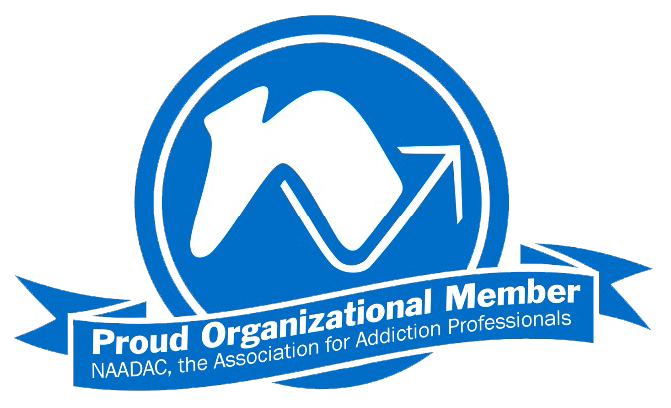-
GeneralGeneral
-
Tobacco Cessation (with examples from Caribbean Countries) Homepage


Welcome to Tobacco Cessation (with examples from Caribbean Countries). This virtual course provides participants with the tools for strengthening tobacco cessation services in Primary Health Care (PHC) settings. It aims to improve participants’ knowledge, skills, and attitudes regarding tobacco cessation.
Tobacco Cessation (with examples from Caribbean Countries) is sponsored by the Pan American Health Organisation (PAHO). This course was originally delivered on PAHO’s Virtual Campus for Public Health (VCPH) platform to a chosen cohort of PHC providers in the Caribbean. The course is largely based on PAHO’s “Part III (Training for Primary Care Providers): Building capacity for tobacco control: training package” and the course Training for Primary Care Providers: Brief Tobacco Interventions. It uses learning resources from accredited, world-class organizations such as the Pan American Health Organization and the World Health Organization.
WHO/PAHO members developed and reviewed the technical contents of this course with the participation of Kavita Singh, Regional Data Coordinator, Tobacco Control; Elisa Prieto, Advisor, Non Communicable diseases and mental health, Subregional Program Coordination; Eduardo Bianco,Technical Director of the International Center for Tobacco Control Cooperation; Irene Melamed, Consultant and Coordinator, Virtual Campus of Public Health; and Francisco Armada Perez, Regional Advisor for Tobacco Control; NextGenU.org’s staff adapted the technical content and collaborated in developing assessments and other didactic materials.NextGenU.org members participating in the creation of this course include Margaret Niles, PhD, MEd, DipID; Hugo Rojas, MD, MSc, DiplEd; Jesse Ramkalawan, BSc; Carolina Bustillos, MD, DiplEd; Pablo Baldiviezo, MD, DiplEd.
For publications on NextGenU.org’s courses’ efficacy, see “A Novel Integration of Online and Flipped Classroom Instructional Models in Public Health Higher Education,” (2014), BMC Medical Education, “Building Public Health Capacity through Online Global Learning,” (2018), Open Praxis, or on NextGenU.org’s publication page. Subscribe to our newsletter to be notified of future updates, new courses, and to be part of our community.
There are 11 modules to complete, which include:- Module 1: Introduction: Cessation as One of the Elements of Tobacco Control in the Caribbean;
- Module 2: The Role of Primary Care Providers in Tobacco Control and Tobacco Dependence Treatment;
- Module 3: Basics of Tobacco Use and Tobacco Dependence;
- Module 4: Tobacco, Health, and COVID-19;
- Module 5: Overview of Brief Tobacco Interventions;
- Module 6: Asking, Advising, and Assessing Readiness to Quit;
- Module 7: Dealing with Low Motivation
- Module 8: Assisting and Arranging for Follow-Up;
- Module 9: Pharmacological Interventions;
- Module 10: Other Cessation Interventions; and
- Module 11: Tobacco Cessation During Pregnancy.
The completion time for this course is estimated at 28 hours, including 8 hours of learning resources that include webinars, 8 hours for time to study content, and 12 hours of participating in learning activities and quizzes to assist the learners in the synthesis of learning materials.
Requirements for completion of course:
The course will be delivered asynchronously. Participants are required to complete quizzes, assignments, simulations, and a final exam to pass the course. Participants who complete the course will receive a certificate of completion.
At the end of each Module, there is a quiz of ten (10) multiple-choice questions. After you’ve completed each Module, quiz, and learning activity, at the end of the course, you’ll have access to a final exam consisting of thirty (30) multiple-choice questions, and a chance to evaluate this course. The final exam will be designed so that participants can have multiple opportunities to answer correctly until the required score of 80% or higher is obtained. Once you’ve passed the last test, you will be able to download a certificate of completion from NextGenU.org endorsed by the Pan American Health Organization. We keep all of your personal information confidential, never sell any of your information, and only use anonymized data for research purposes. Also, we are happy to report your testing information and share your work with anyone (your school, employer, etc.) at your request.
Engaging with this Course:
You may browse this course for free to learn for your personal enrichment; there are no requirements. To register in this course, it is required that learners have obtained a college-level/bachelor's degree.
To obtain a certificate a learner must successfully complete
- All the reading requirements,
- All quizzes and pass with a 80% with unlimited attempts,
- All Activity simulations,
- All discussion forums,
- The final exam with a minimum of 80% and a maximum of 3 attempts, and
- The self and course evaluation forms.
To obtain credit:
- Complete all requirements listed above for the certificate, and
- Your learning institution or workplace should approve the course for educational credit, as they would for their learner taking a course anywhere.
NextGenU.org is happy to provide your institution with:
- A link to and description of the course training, so they can see all its components, including the cosponsoring universities and other professional organization cosponsors;
- Your grade on the final exam;
- Your work products (e.g. Discussion forum activities), and any other required or optional shared materials that you produce and authorize to share with them;
- Your evaluations -- course, and self-assessments;
- A copy of your certificate of completion, with the co-sponsoring universities and other organizations listed.
To obtain a degree, NextGenU.org co-sponsors degree programs with institutional partners. To obtain a full degree co-sponsored with NextGenU.org, registrants must be enrolled in a degree program as a student of a NextGenU.org institutional partner. If you think that your institution might be interested in offering a degree with NextGenU.org contact us.
We hope that you will find this a rewarding learning experience, and we count on your assessment and feedback to help us improve this training for future students.
Here are the next steps to take the course and earn a certificate.
- Complete the registration form.
- Take the pre-test.
- Begin the course with Module 1: Introduction: Cessation as One of the Elements of Tobacco Control in the Caribbean. In each lesson, read the description, complete all required readings and any required activity, as well as take the corresponding quizzes.
This course meets nationally approved standards of education developed for the addiction/substance use disorders counseling profession. This course's participants are assured that the continuing education (CE) credits provided will be accepted toward national credentialing by the NAADAC Certification Commission for Addiction Professionals (NCC AP), as well as by many of the individual state licensing/certification bodies in the addiction and other helping professions.
Disclaimer: This course is Caribbean-focused, and although many of the resources will be helpful for a global audience, the content will need further contextualization for those outside of the Caribbean.
-
Module 1: Introduction: Cessation as One of the Elements of Tobacco Control in the Caribbean
 Student Learning Outcomes:
Student Learning Outcomes:- Understand the concept of tobacco use as a global epidemic, with emphasis on the Americas and The Caribbean.
- Describe the FCTC and basics of tobacco control.
- Recall the main objective of FCTC Article 14 and the guidelines for implementation.
- Describe the synergies that exist between FCTC and HEARTS-PEN.
5 URLs -
Module 2: The Role of Primary Care Providers in Tobacco Control and Tobacco Dependence Treatment
 Student Learning Outcomes:
Student Learning Outcomes:- Explain the role of primary care providers in tobacco control and tobacco dependence treatment.
- List the existing effective tobacco treatment methods.
- Define brief tobacco interventions.
- Examine the feasibility and effectiveness of brief tobacco interventions.
- Outline the content of brief tobacco interventions (5A's).
3 URLs, 1 Forum -
Module 3: Basics of Tobacco Use and Tobacco Dependence
 Student Learning Outcomes:
Student Learning Outcomes:- Explain the biological, psycho-behavioral, and social causes of tobacco use and dependence.
- Recall common misconceptions about tobacco use and the associated facts.
- Describe the negative health, social, and economic consequences of tobacco use on tobacco users and others.
- Explain the benefits of quitting tobacco use.
3 URLs, 1 Forum -
Module 4: Tobacco, Health, and COVID-19
 Student Learning Outcomes:
Student Learning Outcomes:- Summarize the most recent evidence regarding the health consequences of tobacco use.
- Describe how smoking influences the risk of COVID-19 infection and the severity of symptoms.
- Describe and explain the tools available for tobacco cessation.
5 URLs -
Module 5: Overview of Brief Tobacco Interventions
 Student Learning Outcomes:
Student Learning Outcomes:- Describe the purpose and population impact of brief tobacco interventions.
- Describe at least 3 different brief tobacco intervention models.
1 URL -
Module 6: Asking, Advising, and Assessing Readiness to Quit
 Student Learning Outcomes:
Student Learning Outcomes:- Apply the 5A's brief tobacco intervention model to ask and advise patients about tobacco use in an appropriate way.
- Use two ways to assess patients' readiness to quit.
1 URL, 2 SCORM packages -
Module 7: Dealing with Low Motivation
 Student Learning Outcomes:
Student Learning Outcomes:- Apply the 5R's model to respond appropriately to patients that exhibit resistance to quitting.
- Use motivational tools to assist patients with low motivation to quit.
3 URLs -
Module 8: Assisting and Arranging for Follow-Up
 Student Learning Outcomes:
Student Learning Outcomes:- Describe the key elements of assisting patients to make a quit attempt.
- Explain how to integrate the 5A's, 5R's, and components of a quit attempt to deliver a brief tobacco intervention.
2 URLs, 1 SCORM package -
Module 9: Pharmacological Interventions
 Student Learning Outcomes:
Student Learning Outcomes:- Describe types of effective tobacco cessation medications.
- Assess tobacco users' levels of nicotine dependence with the use of tools.
- Recommend appropriate tobacco cessation medications for different situations.
2 URLs, 1 Forum -
Module 10: Other Cessation Interventions
 Student Learning Outcomes:
Student Learning Outcomes:- Describe other currently available tobacco cessation interventions.
- Identify the strengths and weaknesses of other tobacco cessation interventions.
2 URLs, 2 Forums -
Module 11: Tobacco Cessation During Pregnancy
 Student Learning Outcomes:
Student Learning Outcomes:- Describe the impact of tobacco use on maternal and fetal health during pregnancy.
- Explain special considerations in providing cessation services to pregnant patients.
- Discuss ethical issues that must be taken into account when providing tobacco cessation services to pregnant patients.
4 URLs, 1 Forum -
Course and Self Evaluation & Certificate
 In this section, you can provide feedback about this course to help us make NextGenU.org better. Once evaluations are completed, you will be able to download your certificate of completion.
In this section, you can provide feedback about this course to help us make NextGenU.org better. Once evaluations are completed, you will be able to download your certificate of completion.

